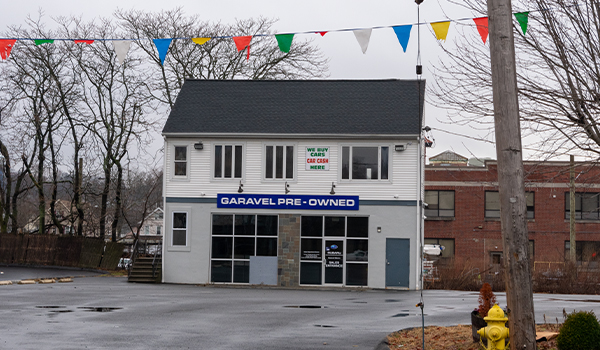The Jan. 4 meeting of the Norwalk Planning and Zoning Commission (PZC) discussed the city’s proposed regulations regarding the placement of stores that can sell recreational use cannabis. Steven Kleppin, the director of Norwalk’s Planning & Zoning Department, provided updates to the commission and highlighted potential issues with the current phrasing prior to a public comment period.
Jan. 10 marked the start of legal sales of cannabis for recreational use in Connecticut. Despite the potential for substantial tax revenue from an industry valued in the billions of dollars, many municipalities across the state have been hesitant to allow stores selling cannabis for recreational use within their borders, even if they already host medical use dispensaries.
While state law precludes the ability of municipal governments to outright ban marijuana use or delivery, it does grant the power to local zoning boards to regulate where adult-use stores can be located. Some municipalities adopted regulations that effectively prevent the opening of any cannabis stores, and Norwalk was among those that imposed a moratorium while zoning plans were developed and implemented.
Kleppin shared several maps indicating the impact of different distances that the PZC considered as a minimum distance between individual cannabis retailers.
“The overlying city wish is to really try to keep it to three (stores) if possible,” Kleppin explained. We think that based on how the city’s grid works in terms of major roadways that seems to make sense. Three could be a good number for us.”
The proposed site for the Fine Fettle cannabis dispensary. Photo by Justin McGown.
According to Kleppin, the distances proposed include a 1-mile, 1.5-mile and 3-mile minimum distance that could make the goal hard to achieve. To allow three stores within the city at the most likely major retail areas, along Connecticut Avenue, Westport Avenue, and near where Main Street meets New Canaan Avenue.
Kleppin’s map illustrated that the larger distances could lead to a single centrally located store preventing any competition from coming to town.
“At one mile if you have somebody go dead center you still have other areas potentially to the north and you bring in Westport and Connecticut Ave, as well,” he said. “But when you expand that circle out to a mile and a half, a big chunk of Westport Avenue is removed. It also starts to infringe a little bit on Connecticut Avenue.”
Kleppin also cautioned that ambiguity in the proposed text raised confusion about whether a cannabis retailer could be in buildings such as strip malls that contain other stores or restaurants. The possibility of multi-use structures with housing prompted significant internal debate.
Commissioner Louis Schulman advocated for tighter restrictions on the basis that patrons might smoke cannabis products immediately outside the stores.
“If I have a child and live in that building, I don’t want my child exposed to that,” Schulman said.
“How is that different from cigarettes, Lou?” asked Commissioner Nick Kantor.
“Because cannabis can get a child high,” responded Schulman, prompting the commission to briefly discuss if contact highs exist, with Schulman advocating for slowly easing restrictions while most of the commission favored only placing restrictions in cases of proven harms.
Several public comments were also submitted. Erin Kirk, a Norwalk resident who provides pro-bono advocacy work to advance the social equity component of the state’s cannabis plans, urged the commission to remove barriers to the use and sale of cannabis citing both its therapeutic value and potential to provide a tax windfall.
However, Kirk noted an issue with the maps that Kleppin presented, stating, “It appears that either all or most of the proposed sites are either already occupied, are located near municipal buildings, have a landlord with a stated adversarial approach to this industry or are located less than 200 feet from a residential dwelling unit.”
Two commentors who called into the meeting spoke on behalf of Shangri-La Dispensary. One of them, Neville Patel from Columbia, Missouri, explained that the company had gone to great lengths to find a suitable location for a cannabis retail store.
“We researched about 65 different properties based on a map that was provided with a 1,000-foot restriction,” Patel said. “But as you can see in my emails we spent over 150 hours looking at these properties, three different realtors, troops on the ground, and we were barely able to find one or two properties.”
Adam Blank, an attorney from Wofsey, Rosen, Kweskin & Kuriansky LLP in Hartford, called in to speak on behalf of Fine Fettle dispensaries. He took issue with several requirements in the zoning regulations specific to the cannabis industry and cautioned that alternative interpretations for several aspects existed, potentially creating future disputes.
To illustrate his point, he indicated a location that Fine Fettle was in the process of leasing, the former used car lot for Garavel Subaru at the intersection of Main Street and New Canaan Avenue, not far from the center of Kleppin’s hypothetical map.
“We think this lot is perfect,” Blank said after listing the dozen or so minimum distances from sensitive locations it complied with alongside being securable and equipped with sufficient parking. “You’re not going to have issues with this lot’s . But this is 0.4 acres. Under your proposal you are asking for 0.5 acres minimum.”
After deliberation the commission decided to reduce the minimum lot size for the dispensaries to 0.25 acres, settled on a one-mile minimum distance and otherwise streamlined the zoning requirements to allow for cannabis retailers to be placed within mixed-use buildings even if they also contain residences. The updated rules were adopted with a 6-1 vote with only commissioner Richard Roina against.
The regulations will go into effect March 1.
H/T: westfaironline.com



